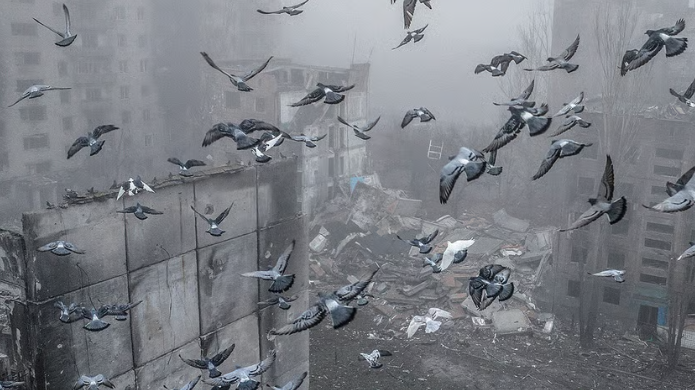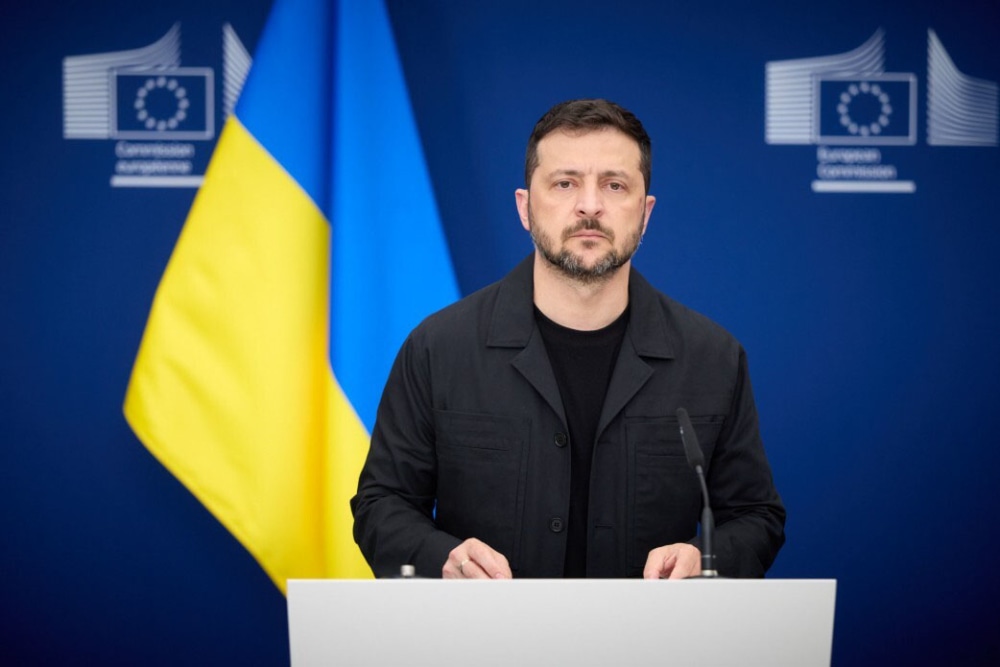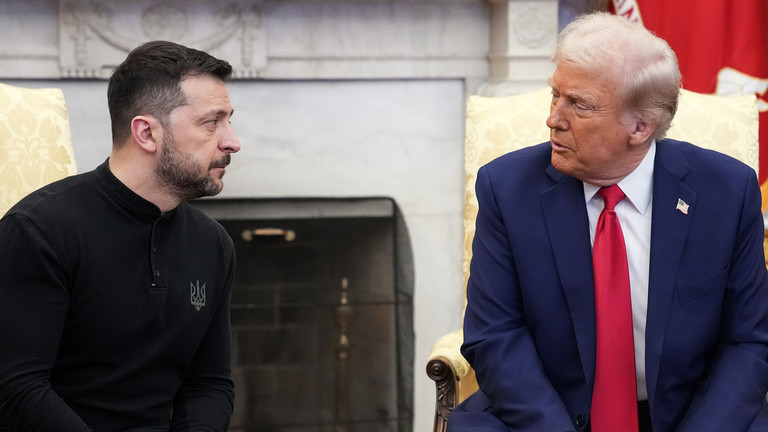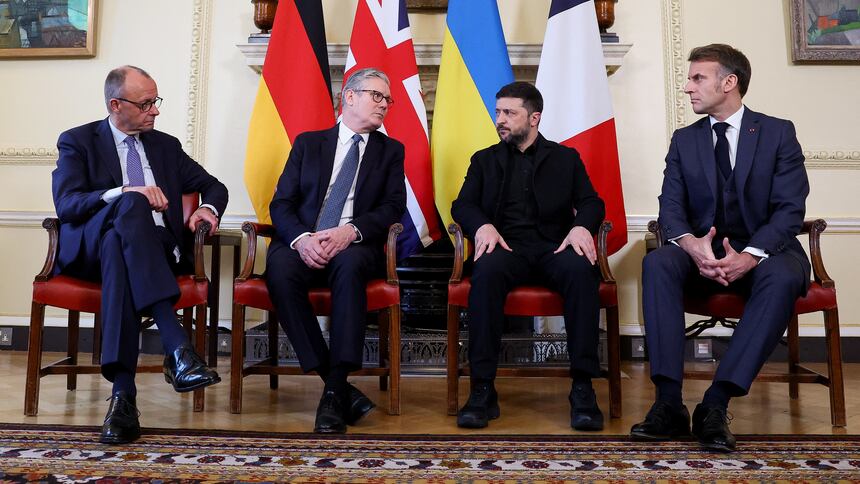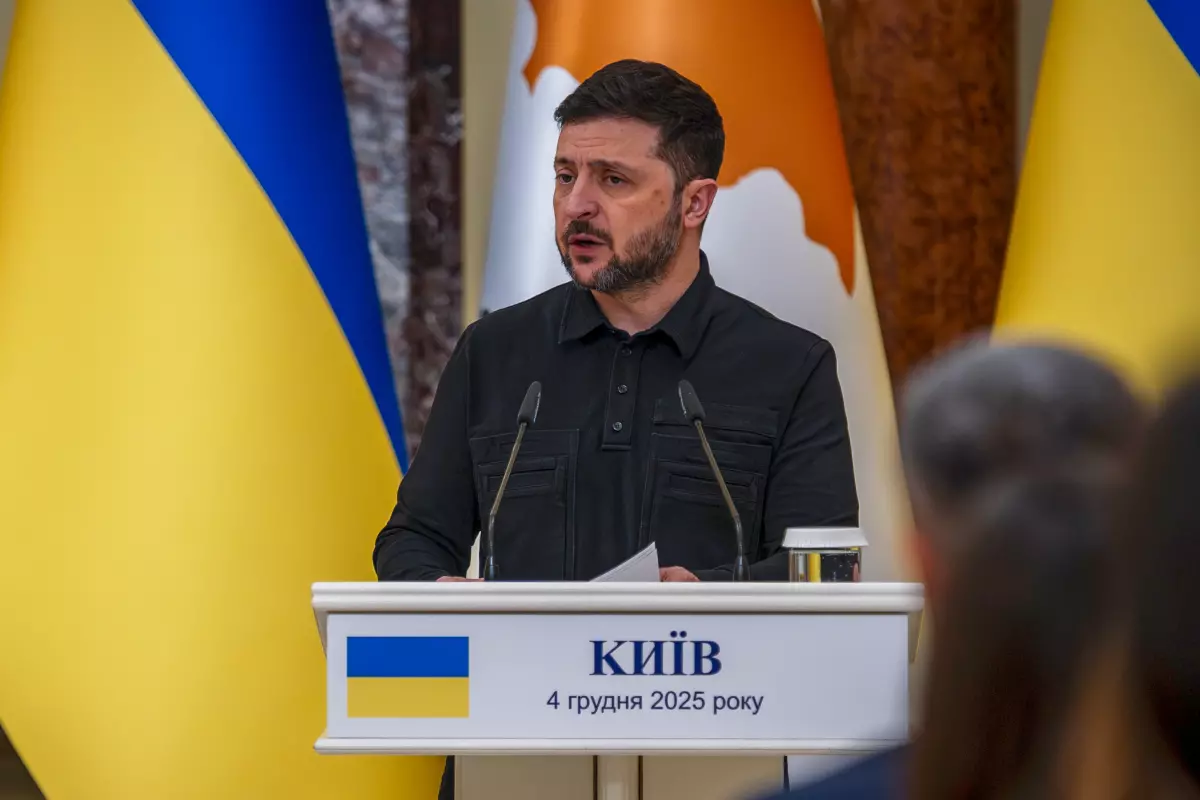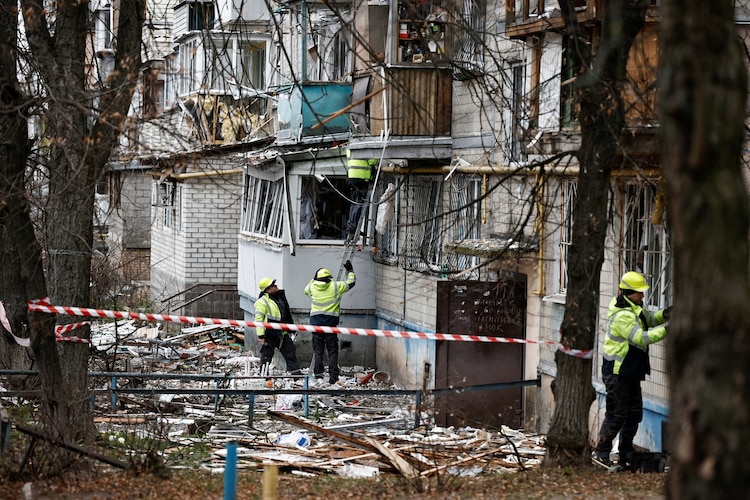
This article is more than
2 year oldU.S. will remain with Ukraine for 'as long as it takes,' Biden says on surprise visit to Kyiv
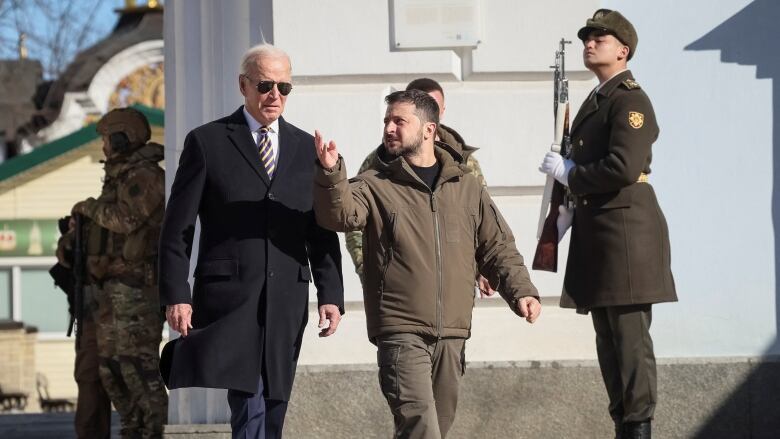
U.S. President Joe Biden made an unannounced visit Monday to Ukraine to meet with President Volodymyr Zelenskyy, a gesture of solidarity that comes days before the one-year anniversary of Russia's invasion of the neighbouring country.
Biden delivered remarks and met with Zelenskyy at Mariinsky Palace to announce an additional half-billion dollars in U.S. assistance and to reassure Ukraine of American and allied support as the conflict continues.
"One year later, Kyiv stands. And Ukraine stands. Democracy stands," Biden said.
The Ukraine visit comes at a crucial moment in the war as Biden looks to keep allies unified in their support for Ukraine as the war is expected to intensify with both sides preparing for spring offensives. Zelenskyy is pressing allies to speed up delivery of pledged weapon systems and is calling on the West to deliver fighter jets to Ukraine - something that Biden to date has declined to do.
Biden's mission with his visit to Kyiv — and then Warsaw — is to underscore that the U.S. is prepared to continue its support of Kyiv as it repels Russian forces, with the U.S. leader saying "the United States will remain with Ukraine as long as it takes."
For Zelenskyy, the symbolism of having the U.S. president stand side by side with him on Ukrainian land as the anniversary nears is no small thing as he prods the U.S. and European allies to provide more advanced weaponry and to step up the pace of delivery.
The visit also gives Biden an opportunity to get a firsthand look at the devastation the Russian invasion has caused on Ukraine. Thousands of Ukrainian troops and civilians have been killed, millions of refugees have fled the war, and Ukraine has suffered tens of billions of dollars of infrastructure damage.
The trip also marks an act of defiance against Russian President Vladimir Putin, who had hoped his military would swiftly overrun Kyiv within days. A year later, the Ukrainian capital stands and a semblance of normalcy has returned to the city as the fighting has concentrated in the country's east, punctuated by cruise missile and drone attacks against military and civilian infrastructure.
Air raid sirens
Biden also got a short first-hand taste of the terror that Ukrainians have lived with for close to a year, as air raid sirens howled over the capital just as he and Zelenskyy were exiting a cathedral they visited together. Looking solemn, they continued unperturbed to stand in front of a wall honouring Ukrainian soldiers killed since 2014.
Though Western surface-to-air missile systems have bolstered Ukraine's defensives, the visit marked the rare occasion where a U.S. president has traveled to a conflict zone where the U.S. or its allies did not have control over the airspace. It wasn't immediately clear whether the U.S. had given advance notice of the trip to Moscow to avoid any miscalculation that could bring the two nuclear-armed nations into direct conflict.
The U.S. military does not have a presence in Ukraine other than a small detachment of Marines guarding the embassy in Kyiv, making Biden's visit more complicated than other recent visits by prior U.S. leaders to war zones.

Speculation has been building for weeks that Biden would pay a visit to Ukraine around the Feb. 24 anniversary of the Russian invasion. But the White House repeatedly had said that no presidential trip to Ukraine was planned, even after the Poland visit was announced earlier this month.
At the White House, planning for Biden's visit to Kyiv was tightly held — with a relatively small group of aides briefed on the plans — because of security concerns.
Asked by a reporter on Friday if Biden might include stops beyond Poland, White House National Security Council spokesman John Kirby replied, "Right now, the trip is going to be in Warsaw." Moments later — and without prompting — Kirby added, "I said 'right now.' The trip will be in — to Warsaw. I didn't want to make it sound like I was alluding to a change to it.
Biden quietly departed from Joint Base Andrews near Washington shortly after 4 a.m. on Sunday, making a stop at Ramstein Air Base in Germany before making his way into Ukraine.
Other western leaders have made the trip to Kyiv since the start of the war.
In June, French President Emmanuel Macron, German Chancellor Olaf Scholz and then Italian Prime Minister Mario Draghi traveled together by night train to Kyiv to meet with Zelenskyy. British Prime Minister Rishi Sunak visited Kyiv in November shortly after taking office.
This is Biden's first visit to a war zone as president. His recent predecessors, Donald Trump, Barack Obama and George W. Bush, made surprise visits to Afghanistan and Iraq during their presidencies to meet with U.S. troops and those countries' leaders.
